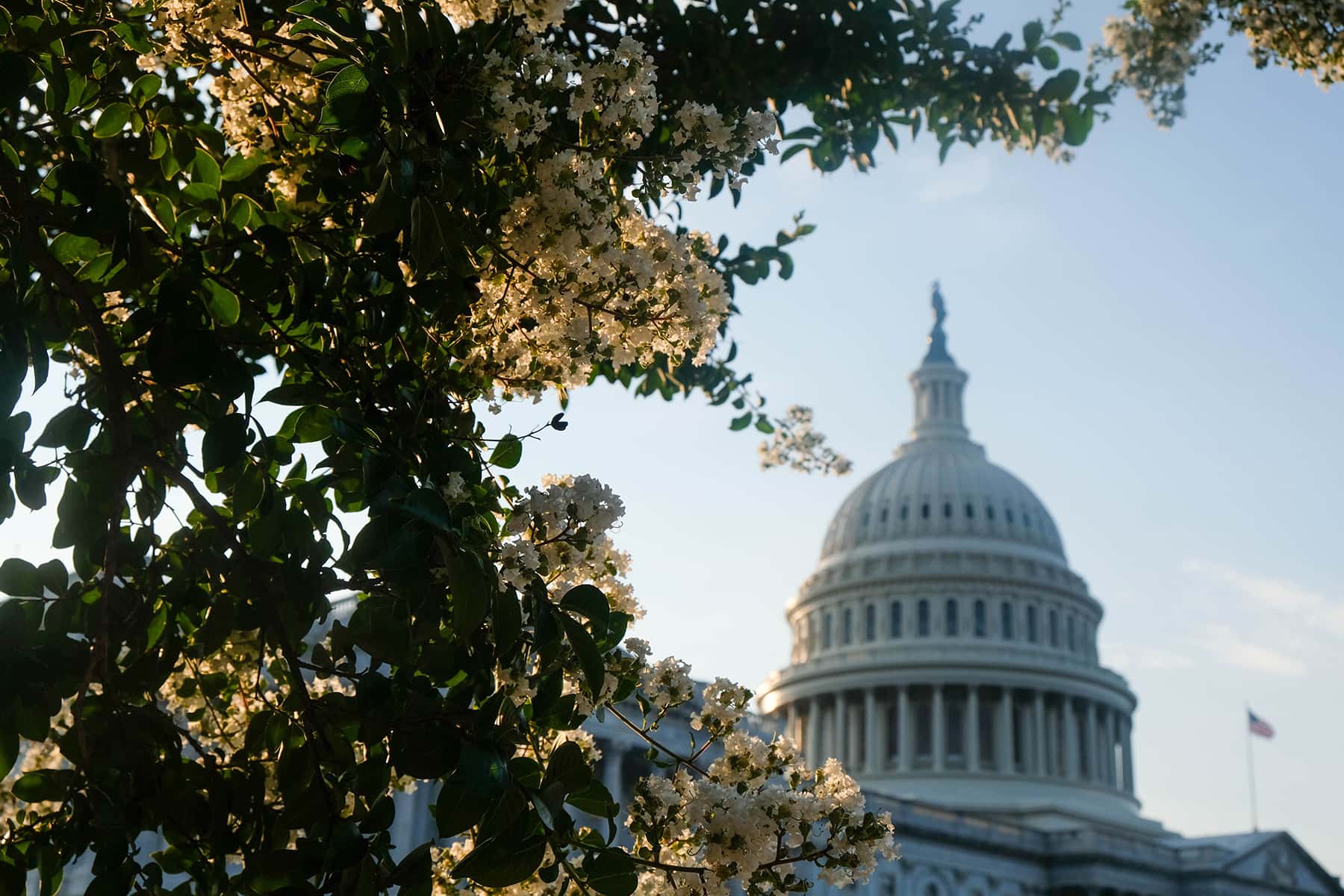
The House of Representatives passed a funding bill on September 21 that would both keep the government from shutting down and prevent a default on the U.S. debt. The vote was 220 to 211, with all Democrats voting in favor and all Republicans voting against.
There are two financial deadlines looming. One is the need for Congress to fund the government. In late December 2020, Congress passed a huge bill that, among other things, funded the government through September 30. The new fiscal year starts on October 1, and if the government is not funded, it will have to shut down, ending all federal activities that are not considered imperative. This year, such activities would include a wide range of programs enacted to combat the economic crisis sparked by the coronavirus pandemic.
The second deadline is lifting the debt ceiling. That us the amount of money Congress authorizes the government to borrow. Beginning in 1939, rather than approving individual issues of debt, Congress gave the government more flexibility in borrowing by simply agreeing to an upper limit that included all the different financial instruments the government uses.
The debt ceiling is not connected directly to any individual bill, and it is not an appropriation for any specific program. It enables the government to borrow money to pay for programs in bills already passed. If the debt ceiling is not raised when necessary, the government will default on its debts, creating a financial catastrophe.
There is a long history behind our national funding systems. Until now, the U.S. has always protected its debt. After the Civil War, Democrats were determined to destroy the strong federal government the Republicans had built to fight the Confederacy. They tried to change the terms under which people had invested in wartime national bonds. Horrified at what would undermine confidence in the survival of the Union, the Republicans protected the debt in the Fourteenth Amendment.
The fourth section of that amendment reads: “The validity of the public debt of the United States, authorized by law, including debts incurred for payment of pensions and bounties for services in suppressing insurrection or rebellion, shall not be questioned.”
Former Confederates challenged the nation through financing once again, in 1879. In that year, in control of Congress for the first time since the Civil War, Democrats refused to pass appropriations bills unless those bills included their own policy priorities, especially the removal of the federal troops still in the South to protect black voting (it is a myth that federal troops left the South in 1877).
Republican leader and Union veteran James A. Garfield had fought the Confederates on the battlefields and recognized that destroying the government by starving it was no different from destroying it through arms. He urged President Rutherford B. Hayes to veto the Democrats’ appropriations bills, and Hayes did, five times. Democrats backed down, but not before voters turned against them. The next year, voters put Garfield into the White House.
In the modern era, shutdowns emerged as a policy tool after the 1974 Congressional Budget and Impoundment Control Act moved control over budgeting from the executive branch to Congress. Disagreements over funding in President Jimmy Carter’s term had little effect on the country, since government systems continued during them under the assumption that funding would eventually materialize. That changed in the early 1980s, when legal opinions said it was illegal to spend money that hadn’t been appropriated.
Beginning in the 1980s, government shutdowns became a tool of Republicans determined to cut taxes and dismantle the active government in place since 1933. In November 1981, President Ronald Reagan furloughed more than 240,000 federal workers in a fight with Congress over budget cuts, but full-fledged government shutdowns began in earnest after Republicans took control of the House of Representatives in 1995 for the first time since 1954.
Demanding steep budget cuts in Medicare, public health, the environment, and education, House Speaker Newt Gingrich refused to compromise with Democratic president Bill Clinton, who opposed the cuts. Without funding, the federal government shut down all non-essential activity for a total of 28 days between November 1995 and January 1996: National parks shut down, government contracts ceased to operate, applications for visas and passports went unanswered. The crisis pushed Clinton’s poll numbers higher than they had been since his election.
In 2013, the government shut down again from October 1 to October 17 as Republicans tried to defund the Affordable Care Act. It shut down yet again for its longest stretch in 2019, after then-president Donald Trump demanded $5.7 billion in funding for a border wall from a Congress controlled by his own party.
To avoid shutdowns, Congress can pass a funding bill or a continuing resolution to give themselves more time to pass such a funding bill. That is part of what is in the bill the House passed this evening: funding until December 3.
The other part of the House bill is a suspension of the debt ceiling until December 2022, after the midterm elections. Congress has raised the debt ceiling more than 100 times since it first went into effect: 18 times under Reagan, and most recently in 2019 under former president Trump, when Democrats joined Republicans in suspending the limit until 2021. In that time, Republicans added about $6.5 trillion to the debt through coronavirus spending and tax cuts.
Now, though, Republicans are refusing to support an increase in the debt ceiling, trying to force Democrats to separate the continuing resolution that funds the government from the higher debt ceiling.
What is at stake is the nature of the American government. Republican lawmakers begrudgingly passed social welfare legislation to address the pandemic in the months before the 2020 election, but they are still keen on dismantling a government that regulates business, provides a social safety net, and promotes infrastructure. Creating debt to cut taxes on corporations and the wealthiest Americans fits their belief that the economy and society are most efficient when successful men are able to run them as they see fit.
Biden and the Democrats are trying to counter that worldview with their own belief that the country will work best when the government guarantees everyone equal access to resources and equality before the law. After forty years of the Republicans’ austerity, achieving that equality, including rebuilding crumbling infrastructure, will cost money. At the same time, Democrats do not want to assume full responsibility for increasing the debt ceiling when much of the debt it covers was created by Republicans during the Trump administration.
Right now, neither side is indicating it will back down. Senate Minority Leader Mitch McConnell (R-KY), who has voted to raise or suspend the debt ceiling 32 times in his career, including 3 times under Trump (who contributed about $7.8 trillion to today’s $28 trillion national debt), says he will not vote to suspend the debt ceiling and will try to hold his caucus against it. He says it’s the Democrats’ problem.
A default on the nation’s financial obligations has never happened before and would create an economic crisis echoing the destruction of the nation Garfield talked about in 1879. Treasury Secretary Janet Yellen says it “could trigger a spike in interest rates, a steep drop in stock prices and other financial turmoil. Our current economic recovery would reverse into recession, with billions of dollars of growth and millions of jobs lost.” Financial services firm Moody’s Analytics warned that a default would cost up to 6 million jobs, create an unemployment rate of nearly 9% and wipe out $15 trillion in household wealth.
That Republicans are willing to risk yet another step that will make America look like a failed state is stunning.
But even if that is not their ultimate goal, posturing and negotiations over finances are running out the congressional clock while the Democrats’ very popular signature issues — infrastructure and voting rights — languish.
Sаrа Cоttlе
Letters from an Аmerican is a daily email newsletter written by Heather Cox Richardson, about the history behind today’s politics













